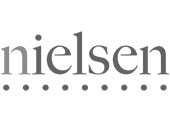Discover how the Start-Stop-Continue framework enhances team performance through effective feedback. This practical approach to constructive feedback improves communication, boosts productivity, and drives your team's success.
Unlocking Potential: The Start-Stop-Continue Framework for Performance Feedback

Have you experienced a breakdown in team communication where feedback is ignored, impacting performance and morale? The Start-Stop-Continue framework can quickly restore communication, enhance productivity, and promote teamwork.
Understanding The Start-Stop-Continue Framework
The Start-Stop-Continue Framework is a highly effective method for providing constructive feedback. This straightforward yet powerful exercise enables individuals and teams to identify actions they should start, stop, and continue to enhance performance and achieve their goals.
Start: Initiating New Actions or Behaviours
- The "Start" component identifies and initiates new actions or behaviours that can enhance performance and productivity. These are activities that the team or individual isn't currently doing but could be beneficial if implemented.
- Example: Regular Feedback Sessions: Weekly one-on-one feedback meetings can help address issues promptly and maintain open communication lines.
Stop: Discontinuing Unproductive or Harmful Actions
- The "Stop" aspect involves identifying behaviours or processes that are unproductive, harmful, or no longer useful. Discontinuing these actions can help eliminate inefficiencies and create a more positive work environment.
- Example: Unnecessary Meetings: Reducing the number of unproductive meetings frees up time for more critical tasks and reduces meeting fatigue.
Continue: Recognizing and Maintaining Effective Practices
- The "Continue" segment highlights the importance of recognizing and maintaining practices that are working well. These actions contribute positively to the team's performance and should be sustained.
- Example: Team Collaboration: Ongoing collaborative efforts ensure team members leverage each other's strengths and work cohesively.
8 Straightforward Steps to Implement the Start-Stop-Continue Framework
Here's a step-by-step guide on how to conduct the Start-Stop-Continue exercise:
- Step 1: Set Clear Objectives
- Before beginning the activity, establish clear objectives. Define the purpose of the feedback session and what you hope to achieve. Whether improving team communication, enhancing productivity, or refining specific skills, ensure everyone understands the goals.
- Step 2: Create a Safe Environment
- Create a safe and non-judgmental environment where participants feel comfortable sharing their thoughts and ideas openly. Emphasize the importance of constructive criticism and assure participants that all feedback will be used to drive positive change.
- Step 3: Explain the Concept
- Introduce the Start-Stop-Continue framework to the participants. Explain that they will identify three categories of actions:
- Start new behaviours, practices, or strategies they should begin implementing.
- Stop existing behaviours, habits, or processes they should discontinue.
- Continue actions or practices that work well and should be maintained.
- Introduce the Start-Stop-Continue framework to the participants. Explain that they will identify three categories of actions:
- Step 4: Provide Examples
- Offer examples to clarify each category. For instance:
- Start providing more detailed progress updates during team meetings.
- Stop multitasking during important discussions.
- Continue organizing weekly brainstorming sessions, as they have been productive.
- Offer examples to clarify each category. For instance:
- Step 5: Conduct the Exercise
- Distribute sticky notes or provide a digital platform for participants to write down their thoughts in each category anonymously. Encourage them to be specific and provide examples whenever possible.
- Step 6: Facilitate Discussion
- Once everyone has shared their ideas, facilitate a discussion around each category. Group similar suggestions together and encourage participants to elaborate on their feedback. Explore why specific actions should be started, stopped, or continued.
- Step 7: Prioritize and Create Action Plans
- After discussing the feedback, work together to prioritize the suggestions and create actionable steps. Develop specific plans for implementing new practices, eliminating ineffective behaviours, and reinforcing successful strategies.
- Step 8: Follow-Up
- Checking in with your team is essential. Follow up regularly to track progress and evaluate the impact of the changes implemented based on the Start-Stop-Continue feedback. Celebrate successes and address any challenges that arise along the way.
Applying the Start-Stop-Continue framework allows teams to improve performance by starting, stopping, and continuing specific actions. This structured approach fosters continuous improvement, drives positive change, and empowers individuals to achieve their goals.
Mastering feedback with the Start-Stop-Continue framework is crucial for growth. Providing specific, actionable feedback enhances performance, fosters continuous improvement, and drives team success. Embrace feedback to strengthen communication and propel potential. For more insights, read my book, The Power of Emotion. For more motivational content, check out our other inspiring blogs.
More Motivational Reads Here »
How Emotionally Intelligent Are You?
Sign up for Linda’s monthly tips to build your Emotional Intelligence and reduce Emotional Hijacking!

















